Jacob Morgan's Blog, page 37
October 6, 2013
Want a Free Copy of My Book, The Collaborative Organization?
Tomorrow morning I’m doing a webinar with the folks over at Bloomfire on the 5 Types of Collaborative Organizations. The first 160 people who register and attend the webinar will be given a free copy of my book, The Collaborative Organization. During the webinar I’m going to explore the various stages of collaboration maturity with the purpose of helping you answer three crucial questions:
Where is your company) on the collaborative journey?
What do you need to do to get to the next step?
What does the future of collaboration in the workplace look like
Collaboration is consistently ranked as one of the top priorities and challenges by business leaders around the world which makes this a valuable webinar that you should attend. Whether your organization is just getting started with collaboration or has actively been involved in these initiatives for many years; I will be covering things you can apply at your company.
Hope to see you tomorrow!
Register for the free webinar here.
 Send to Kindle
Send to Kindle




October 4, 2013
Friday Vendor Roundup: Asana and Mindjet
Every Friday I’m going to attempt to summarize any relevant news in the future of work/collaboration space. I’ll provide the name of the vendor, a short summary of what the announcement or piece of news is with a link to the original, and finally a short POV. I can’t cover every single thing that comes out but I will do my best to provide as much relevant content as I can. If you have something you think I should include then please send it over and I will decide if it’s something I can add. Ideally I’d also like to see the product which means we can schedule a demo or just me access so that I can take a look at it.
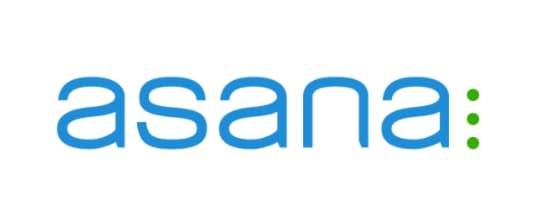 Asana adds new features
Asana adds new features
Asana, the task management software from one of the Facebook founders, just released a handful of new features which include: the ability to upload multiple files or attachments to a task, searching for files within specific project teams, tag de-duplication, and a few others.
My POV
The new features solve issues that I oftentimes struggled with when I first tried using Asana. The product is gaining traction particularly because of the simple to use interface. When you think about it the features that Asana added aren’t actually that major at all yet they solve many existing pain points that Asana customers have. Asana calls these additions and changes “polishing,” and they will continue with these minor additions on a regular basis. Curious to see what the product looks like in the next year or so.
Mindjet announces new Spigit engage
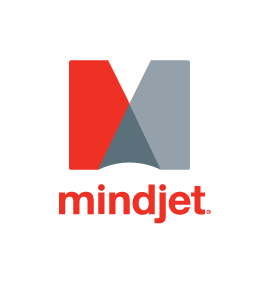
Mindjet and Spigit recently merged and this release is the first since their merger. In this new Spigit engage they announced a personal innovation hub which includes activity streams, trending ideas, a universal inbox, and a few other things.
My POV
I’m personally not a huge fan of the UI/layout but the features themselves are quite useful and as Mindjet stated, should increase employee engagement. The goal of the personal innovation hub is to make the process of ideation more personal to the employees instead of just having it as a broader corporate deployment. The addition of the activity stream and universal inbox help make this happen. I wouldn’t be surprised if we see more enterprise collaboration features added soon to more directly compete with the likes of Jive, Chatter, etc.
See you next week!
 Send to Kindle
Send to Kindle




October 3, 2013
How To Pick the Right Enterprise Collaboration Vendor
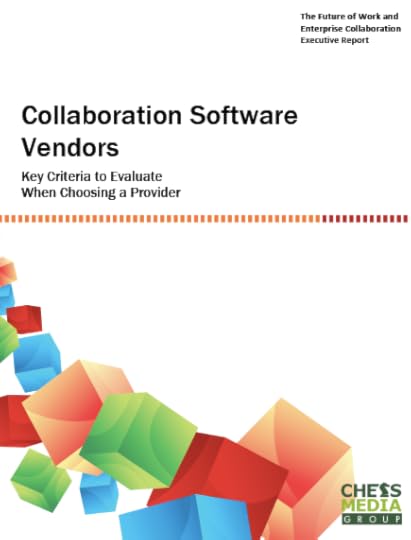 In our ongoing effort to provide you with valuable content around the future of work and collaboration, Chess Media Group is excited to release our latest whitepaper on how to select an enterprise collaboration software vendor. Instead of providing a review of various technologies which would most likely be outdated by the time it was published, we decided to focus on providing a guide to help YOU figure out which vendor is the best for your company. In other words we want to give you the tools you need. The whitepaper is focused on two key things in order to help you accomplish this evaluation.
In our ongoing effort to provide you with valuable content around the future of work and collaboration, Chess Media Group is excited to release our latest whitepaper on how to select an enterprise collaboration software vendor. Instead of providing a review of various technologies which would most likely be outdated by the time it was published, we decided to focus on providing a guide to help YOU figure out which vendor is the best for your company. In other words we want to give you the tools you need. The whitepaper is focused on two key things in order to help you accomplish this evaluation.
The first is a breakdown of the 8 common variables that most companies use to evaluate vendors, these include things such as features, price, support, and others. The second is a framework for how to evaluate vendors based on those variables. We created a simple four-step process which is both easy to understand yet highly customizable to the needs of your company. We’re confident that this whitepaper and the framework within it will become a valuable resource for organizations that either looking to deploy a collaboration vendor or for those who want to evaluate their existing vendor(s) for a possible change.
Download our whitepaper on how to select an enterprise collaboration vendor.
If you are interested in this type of content then I recommend you add your name to our newsletter (in the sidebar). We have lots more resources on the way but in the meantime you can also check out these other resources which you will find valuable in your future of work efforts:
Our latest Future of Work Research Report
The business value of collaboration
 Send to Kindle
Send to Kindle




October 2, 2013
Chess Media Group Turns 4 Years Old!
Wow, I can’t believe it’s been four years since Connie and I first started Chess Media Group in 2009 (as of yesterday). It certainly hasn’t been easy and there have been a lot of ups and downs along the way, but thankfully now it’s mostly ups! We’ve come a long way both professionally and personally and I learned more in running a small consulting business then I could have imagined. When the company first started nobody new who we were, what we did, or why we did it. We had no clients, no network, no money, and no resources.
Four years later and we are working with some of the word’s most forward thinking and progressive companies on helping them understand what the future of work and collaboration is going to look like. We’ve always stayed small and have never raised a single penny of investment from anyone. We created a brand and built a company from scratch and boy was it hard work! They say most new companies don’t last past the three year mark so I guess that makes us one of the successful ones. We still have a lot we want to accomplish but I’m very happy with how far we have come.
We’ve been able to work with some amazing companies along the way and have built some great relationships with friends and peers in the industry.
I’m particularly thankful to have such as great business partner, Connie, who does more than most people realize. Without her I don’t think Chess would have gotten to where it is today. I consider myself to be very fortunate to wake up every morning and do what I love to do and to share that enthusiasm and passion with Connie. We make decisions together, we grow together, and we make it through hard times together.
A big thank you to everyone that has supported Chess Media Group (and me) over the years. Some of you remember us from when we first started in 2009 and we are grateful that you have stuck by us for such a long time. It’s a very exciting time for the world of work and we are thrilled to be able to play a role in it. We have a lot of exciting things happening over the next few months and years so stay tuned!
In the meantime, thank you, thank you, thank you!!
 Send to Kindle
Send to Kindle




September 30, 2013
Get This Blog Delivered to Your Kindle; Read it on Any Device
By now you’ve certainly noticed that this site doesn’t look the same way it used to and has in fact been completely changed to do away with anything related to social business and is now 100% focused on the future of work and collaboration. You can read more about the change in a post introducing the future workplace. However, I wanted to point out a new and very useful feature of this new site and that is the ability to get the content delivered directly to your Kindle device. In other words, you can read the articles just like you would an ebook that you open up from your Kindle app (regardless of what device it’s on).
At the bottom of each post you will see a “send to Kindle” button, click on it.
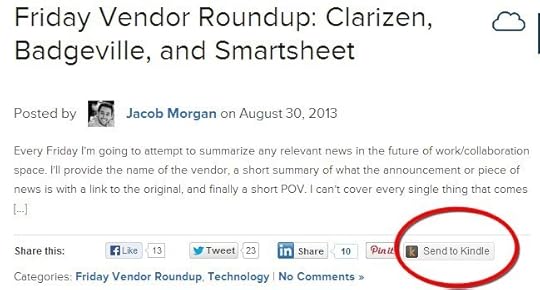
From there you simply need to log into your Amazon account (assuming you have one, if not you need to make one)
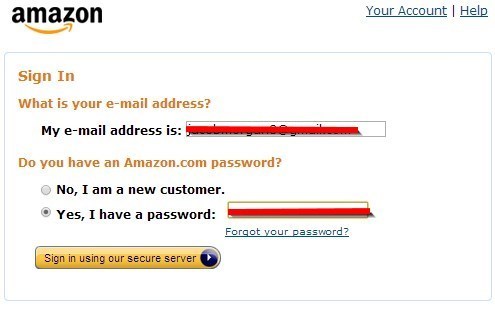
Then when the content opens up you simply hit the “send” button on the bottom right hand of the page.
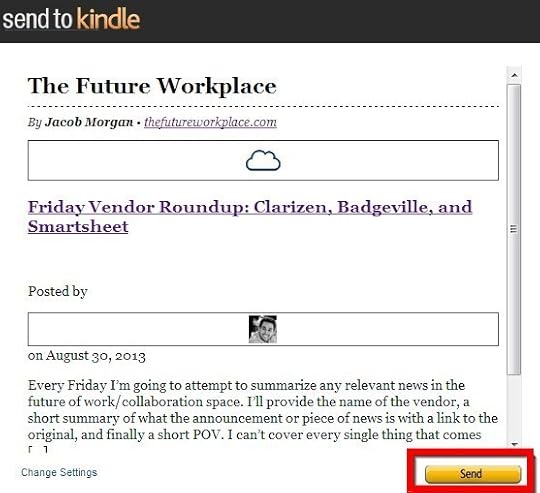
And you’re done, now when you open up your Kindle app (regardless of what device it’s on) you will see it there along with all of your other ebooks and content. In the example below I am using an iphone, just click on the article when it appears, and…
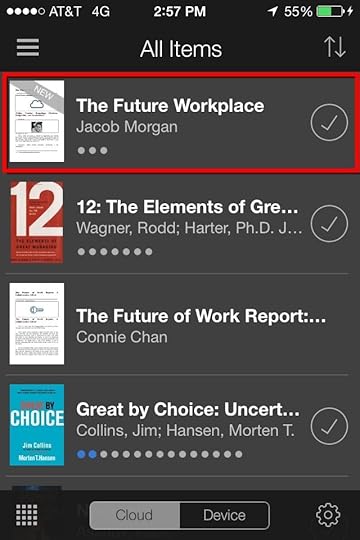
Enjoy!
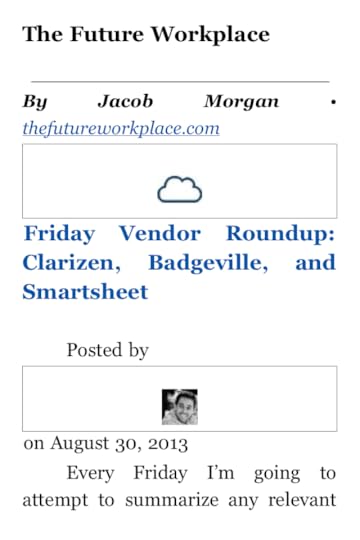
One of the goals I had with the new site was to make it much easier for people to consume and interact with the content and I believe the ability to read it via your Kindle app, does just that. You can send the content to read right away or to read later when you don’t have internet access, such as on a train, or in a cab. Either way I hope this new feature is something you find to be both valuable and useful.
As always, thanks for reading!
 Send to Kindle
Send to Kindle




September 27, 2013
Friday Vendor Roundup: 15Five, Clarizen, & Bitrix24
Every Friday I’m going to attempt to summarize any relevant news in the future of work/collaboration space. I’ll provide the name of the vendor, a short summary of what the announcement or piece of news is with a link to the original, and finally a short POV. I can’t cover every single thing that comes out but I will do my best to provide as much relevant content as I can. If you have something you think I should include then please send it over and I will decide if it’s something I can add. Ideally I’d also like to see the product which means we can schedule a demo or just me access so that I can take a look at it.

15Five launches version 2.0
15Five recently launched the newest version of their product which includes a new user interface, the ability to “like” content, private messaging, reporting into specific groups, and a host of other things.
My POV
15Five isn’t your traditional collaboration platform. In fact the whole premise of the platform is that employees spend 15 minutes a week writing up a short report and managers spend less than five minutes reading it and providing feedback. It’s basically designed to give you a “pulse” for your company. Each week employees are asked a handful of questions (around 5) such as “how are you feeling?” or “have you had any wins this week?” Managers then respond. The new design and features look great the platform is very easy to use but again it’s not a product that helps facilitate collaboration or getting work done. It’s still in the early stages so we’ll see what happens!
 Clarizen (client) adds JIRA integration
Clarizen (client) adds JIRA integration
Clarizen is a platform for project management and JIRA is a platform for bug tracking and now the two are integrated together. This means that anything on the development side can now be more effectively planned and managed through Clarizen.
My POV
The integration makes complete sense in my opinion. However, Atlassian also offers a product called Confluence which also allows for collaboration and management of any R&D issues. Clarizen is a more robust project management platform though. The integration should make it much easier for any technical teams to go through the whole cycle of finding bugs, fixing bugs, and rolling out the changes (as well as any general development projects).
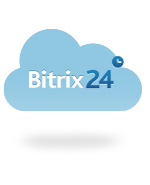 Bitrix24 releases the latest version of their collaboration platform
Bitrix24 releases the latest version of their collaboration platform
Bitrix24 announced new features such as real time updates in activity feeds, document collaboration, video conferencing, email connectors, more customization’s for how you use and interact with Bitrix24, and a host of other things.
My POV
You know, I really like the Bitrix24 product. I’ve kept an eye on them for a little while now and they have come a really long way. The product looks great and offers a lot of functionality. The UI isn’t that much different from what you might expect to find in another collaboration platform but there are some minor details that give it that little bit of differentiation. I think the sweet spot for Bitrix is either smaller or mid-size businesses but for that particular market it has a great offering with a very reasonable price point. The link above talks about all the new additions but I think this is one of their most significant releases as far as functionality goes.
Until next week!
 Send to Kindle
Send to Kindle




September 23, 2013
Meeting Requirements vs Meeting Needs
 A while ago I was meeting with a prospective client who told me about how much trouble they were having with their collaboration efforts at his company. We talked for a while and I was shown a list of requirements for what the platform should have. I took that list and then went to go speak with a few employees in the organization to find out why they weren’t using the tools if the requirements were met.
A while ago I was meeting with a prospective client who told me about how much trouble they were having with their collaboration efforts at his company. We talked for a while and I was shown a list of requirements for what the platform should have. I took that list and then went to go speak with a few employees in the organization to find out why they weren’t using the tools if the requirements were met.
One of the requirements was to have the ability to collaboratively edit and create documents so I go to the first employee to ask her about it. She says, “sure you can do that in the platform but it requires some knowledge of HTML and wiki markup language to know how to actually work on a document with someone.”
Another requirement was to have the ability to create private groups for teams. Again, I go to another employee to ask him about it. He say, “oh ya, you can create groups if you want but then you need to wait at least a week before that group will get approved, by that time we no longer need the group.”
Finally, another requirement was to allow employees to motivate and encourage each other by giving each other badges or “kudos.” Again I go to another employee and ask them about this and the response I got back was, “Yes, you can assign badges and give “kudos” to coworkers but the problem is that you need upload your own badge and then tinker with it so that it looks decent when it’s uploaded not only that, there is no context around what the badge is for or what the “kudos” is for.”
This is a problem of focusing on requirements instead of needs.
Oftentimes those who develop requirements for collaboration platforms aren’t the same people who are going to be using them. Requirements are usually put together in the form a big list which someone can go down and check off. Then if any issues arise in the future such as employees not using the tools, those who developed the requirements can say, “we checked off everything you asked for, it’s not our problem.”
This is a situation I have seen many times and the problem is that many of those responsible for these initiatives aren’t looking at the big picture, they are purely focused on the technology requirements instead of actually understanding the problems that these technologies need to solve and how employees are going to use them.
This is a very costly mistake to learn but you can avoid this very expensive lesson by doing the following:
Develop your use cases by speaking with employees at your company in various departments to get their feedback and perspective. This is research.
Make sure the team leading this effort is cross-functional, meaning it’s not just a bunch of technologists working on a product.
Communicate the updates and developments to employees, don’t wait for everything to be done. Communication is key.
That’s all you need to do, three things which are mainly focused on communication. This is a classic example of bringing together both the needs of the business with the requirements of the technology.
 Send to Kindle
Send to Kindle




September 20, 2013
Friday Vendor Roundup: Mindjet, Spigit, AtTask, Harmon.ie, Box, & Tomfoolery
Every Friday I’m going to attempt to summarize any relevant news in the future of work/collaboration space. I’ll provide the name of the vendor, a short summary of what the announcement or piece of news is with a link to the original, and finally a short POV. I can’t cover every single thing that comes out but I will do my best to provide as much relevant content as I can. If you have something you think I should include then please send it over and I will decide if it’s something I can add. Ideally I’d also like to see the product which means we can schedule a demo or just me access so that I can take a look at it.
See the rest of my Friday Vendor Roundups
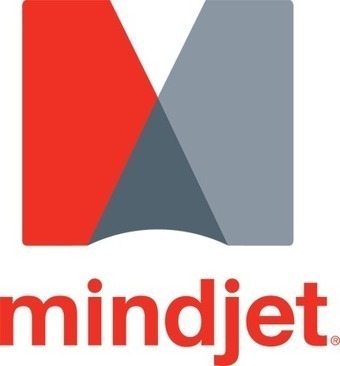 Mindjet and Spigit merge
Mindjet and Spigit merge
Mindjet and Spigit are merging to become a single company. The Mindjet name will stay the same as the 100 Spigit employees fold into the new entity.
My POV
This is one of those acquisitions that makes complete sense but also one that I didn’t see coming. Spigit does a great job of helping organizations manage the ideation and innovation process and Mindjet does a good job of giving employees a platform where they can brainstorm and map out their ideas before they enter that development. As far as I know both companies were doing relatively well but they saw an opportunity to combine their products to build a complete innovation and ideation management platform. Both companies have great teams and I’m looking forward to seeing how they integrate their products and build them out.
 AtTask releases new “Documents”
AtTask releases new “Documents”
The new documents update allows employees to manage what AtTask calls the end-to-end documentlife cycle. This includes organizing and visualizing, collaborating and sharing, proofing and reviewing, approving and distributing, and storing and reusing.
My POV
While most vendors offer somewhat similar features when it comes to document management, I don’t believe that others are as thorough in addressing all of these features around documents. AtTask is a relatively new vendor on my radar but they are putting together quite a good project and content management product. I’m looking forward to getting more familiar with the product and the the team in near future.
Ha rmon.ie releases Office 365 and Sharepoint for Android devices

Harmon.ie established partnerships with Good Technology, Airwatch, Citrix Ready, Samsung KNOX, and MobileIron to provide employees a full featured app to access Office 365 and Sharepoint from their mobile devices (Android and IOS but IOS has already been out).
My POV
This is certainly a positive announcement since security is always a top issue for many companies. This basically means that employee who rely on Office and Sharepoint can now access anything and everything need from their mobile devices. I’m not 100% clear on the details though because as far as I know, most enterprise collaboration vendors also allow for and provide secure access to Office and Sharepoint through their applications and many of them work with vendors such as Good Technology and Airwatch. Either way it’s clear that most businesses to use Sharepoint and Office 365 and empowering that mobile workforce by allowing them to use mobile apps to access people and information is always a good thing!
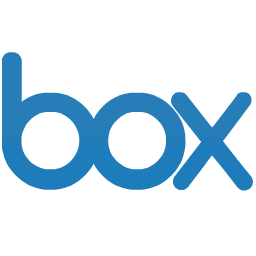 Box adds new productivity features
Box adds new productivity features
Box announced a few things at their recent Boxworks conference including: Notes (designed to be a Google docs killer), a preview experience (a beautiful new way to see your content), new admin tools, and the ability to add meta-data (for developers).
My POV
The big announcement was the introduction of Notes which is designed to act just like Google docs which means you can collaboratively create and edit documents with other employees. I’m certainly a big fan of Box and the work they are doing. Do I think the new features are groundbreaking or earth-shattering? Absolutely not but I do think they are closing the gap around working and collaborating instead of just managing content and storing information. I fully expect them to continue in this direction.
 Tomfoolery launches their Anchor product on Android, Adds Box and Dropbox integration
Tomfoolery launches their Anchor product on Android, Adds Box and Dropbox integration
Well the title says it all! Tomfoolery originally launched their product on IOS devices and are now unveiling their Android app to connect and engage the mobile workforce. Box and Dropbox integrations are available across all their supported devices.
My POV
Most people have never heard of Tomfoolery or their product Anchor, and that’s because the team behind it is small, the product is new, and there isn’t a lot going on in terms of marketing. However, Anchor is perhaps one of the most beautifully designed mobile apps for collaboration that I have seen on the market today. Their main target market is definitely not the enterprise but I think they can make a dent in smaller and perhaps (later) some mid-size organizations. Box and Dropbox are the two most popular document management and collaboration platforms so integrating with them is certainly a good idea, as is adding the Android app. They have a unique opportunity to enter the market by providing something that really rethinks the way work should be done. As of now the app is free.
 Send to Kindle
Send to Kindle




September 18, 2013
When it Comes to the Future of Work, Would Your Rather Try or Succeed?
 I’m oftentimes amazed at how many times I speak to people running future of work or collaboration initiatives for their company who are just not prepared to do so, and it’s not their fault. Organizations are in a tough spot. Many of them see and feel that the world of work is changing but they aren’t sure what to do about it. So what inevitably happens is someone gets appointed to be in charge of these projects. The people who get appointed could be anyone with an interest in the future of work. While these types of employees are fantastic to have as community managers I wouldn’t hand over all of the responsibilities to them which include everything from vendor selection and strategy development to technology roadmaps and education and training.
I’m oftentimes amazed at how many times I speak to people running future of work or collaboration initiatives for their company who are just not prepared to do so, and it’s not their fault. Organizations are in a tough spot. Many of them see and feel that the world of work is changing but they aren’t sure what to do about it. So what inevitably happens is someone gets appointed to be in charge of these projects. The people who get appointed could be anyone with an interest in the future of work. While these types of employees are fantastic to have as community managers I wouldn’t hand over all of the responsibilities to them which include everything from vendor selection and strategy development to technology roadmaps and education and training.
In the last year or so I also started to notice an interesting trend. When I first started helping companies with things related to the future of work I would be be collaborating with people who had job titles such as: CIO, VP of IT, Head of Marketing, Global Knowledge Manager, and others. Now I see new roles emerging such as: VP of Transformation, Chief Collaboration Officer, Director of Future Solutions, and the like. I still see my fair share of the other titles as well but new ones are creeping in.
It’s an interesting shift which to me signifies that the future of work is something that is a genuine and growing concern for many business leaders around the world and they are staffing up in order to make this work. Not only that but they are creating relatively senior level roles around this.
The reality is that everything related to the future of work and collaboration is a process. This process has a big impact and it’s not something that can just be assigned or handed over to anyone just for the sake of saying “we tried.” You don’t want to try you want to succeed, and that requires a bit more commitment.
I’ve written about structuring and building enterprise collaboration teams in the past but the key thing here is that they are teams, not individuals. We also have to remember that these jobs didn’t exist a few short years ago so there is no schooling or formal training in these areas and the level of experience is oftentimes not that great. This means that there is a lot of learning that needs to happen and this learning should already be going on in all companies today (even though it’s not).
I have found that the most effective ways to help educate employees around the future of work and collaboration is as follows:
Provide budget to attend conferences and network with other practitioners.
Leverage resources such as books on the topics of collaboration and the future of work, I wrote a whole 304 page strategy guide on collaboration.
Look at many free resources online such as Slideshare presentations, Youtube videos, and blog posts.
Find consultants or people who you can bring in to help get you started and steer you in the right direction.
Invite employees from other companies to present and share their insights and ideas at your company.
Bring your senior team together to discuss what the future of work looks like at your company to give context to what this all means.
Experiment with the technologies that are out there, many of them have freemium versions you can take for a test drive.
I’m sure you can think of other things here but don’t just throw employees at the problem and expect a solution. That’s what companies do who “try”; but we already agreed that it’s better succeed than to try, right?
 Send to Kindle
Send to Kindle




September 16, 2013
The Vendor Opportunity Gap in The Future of Work
 The bulk of what I do entails working with large (and some mid size) organizations on helping them understand and then adapt to the changes we are seeing around the future of work and collaboration. Part of this means understanding what’s happening on the technology side of things which is one of the reasons why I started doing my Friday Vendor Roundup.
The bulk of what I do entails working with large (and some mid size) organizations on helping them understand and then adapt to the changes we are seeing around the future of work and collaboration. Part of this means understanding what’s happening on the technology side of things which is one of the reasons why I started doing my Friday Vendor Roundup.
An innovation problem or a marketing obstacle?
For the better part of a year now I’ve noticed a bit of stagnation on the innovation side for many of these vendors. Granted they are still adding features, improving their products, and making other enhancements; but they are not innovating. Most of the things I’m seeing are around new pricing structures, redesigned UIs, some new minor features, and perhaps some added integrations and capabilities. Of course this is still important but I don’t see anyone really pushing the envelope so to speak.
There’s been this long running joke where if you go to the exhibit call of a conference and cover up the logos and branding of the various products, that you won’t be able to tell them apart. They all look the same, do the same thing, and integrate with the same applications.
Many of these technologies have been around for a while now and instead of completely rethinking how work is and should be done they are instead continuing to pile onto their existing platforms which are now not as innovative as they used to be half a decade ago. There is a big opportunity for some disruption to happen here (and I know of a few companies looking to break into this area in the next few months).
The current market challenge
Now having said that I also understand that vendors are also in a bit of a catch-22. Vendors have switched from innovating and product development mode to marketing and selling mode while just doing enough on the product side to keep pace with the market. While these technologies have been around for a few years now, many companies have yet to begin investing in deploying them and developing strategies around them. I get the sense that perhaps some vendors want to move forward at a more rapid speed but then they realize that it might not make sense to do so unless they have more companies purchasing at least the very basic versions of their product. In other words what’s the incentive to innovate unless more organizations start to get on board? (of course I’m not their target market since I’m in the industry).
There are essentially five stages for building a collaborative organization but from a broader perspective I’m seeing a bifurcation in the market. There are those companies who are heavily investing in the future of work and want more innovative technologies and then there are those companies who are at the very bottom of the totem pole who are just getting started (or who started a while ago but haven’t moved anywhere).
The challenge for vendors is how to address the needs of both. How can they provide something for the advanced companies and also something for the companies just getting started? Keep in mind that the market for companies that are just getting started is far bigger which is why most vendors are focusing on sales and marketing instead of on innovation, unfortunately this frustrates the advanced companies. Many vendors are offering the same products and services to companies regardless of what their needs are or how advanced they might be, this is one of the reasons why I advocate the feature adoption framework for collaboration.
An opportunity gap
As mentioned above I see a big opportunity for new vendors entering the collaboration/future of work space that are going to challenge and disrupt the current state of things. Many existing vendors have their hands tied so to speak. They can’t innovate faster than the market is ready to adopt since so many customers are used to their existing platforms which means that they have to keep pace with things, at least until adoption of the technologies increases. However, this doesn’t mean that new vendors can’t come in and start to shake things up a bit, and there are a few which are just on the horizon.
So now the question is what are existing vendors going to do to innovate and what are new vendors going to do to shake things up?
 Send to Kindle
Send to Kindle







